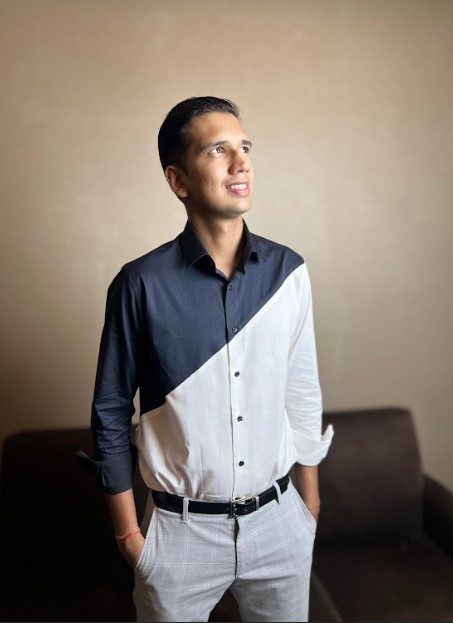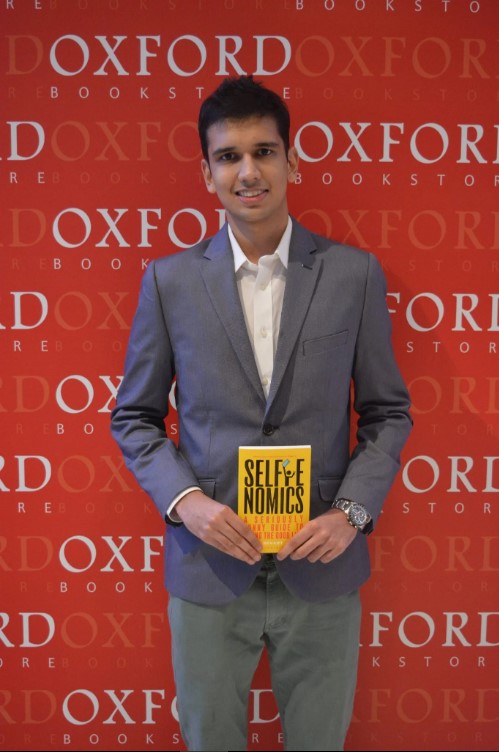(September 6, 2023) “When we go to buy a shirt at Zara, we will try on five shirts, and debate about the color and price before picking one, but when it comes to food, why don’t we look for ten biscuit brands and read the labels before buying one?” asks 31-year-old Revant Himatsingka. The youngster was firmly thrust in the limelight in April this year when a video he made detailing the excess sugar in the popular drink Bournvita went viral on social media. Shared and liked by celebrities including actors Paresh Rawal and R Madhavan, he was compelled to delete it when confectionary maker Mondelez sent a legal notice his way.

Revant Himatsingka, author of the self-help comedy book, ‘Selfienomics’.
However, Mondelez’s response only helped raise the profile of the influencer with Internet doing what it does best – create an appetite for Himatsingka’s work. Since then, he has worked tirelessly to ensure that Indians read product labels before buying products and from bread to biscuits, he highlighted the misleading advertisement that ensure consumers are taken for a ride.
In fact, one of his big wins was when Maggi ketchup took cognizance of his awareness campaign and promised to reduce their sugar content by 22%! From almond biscuits that have only 1.4 % of almonds or neem face washes which contain only 5 % neem, his keen eye brings to the fore facts that exist plain sight but aren’t truly noticed by consumers. Today, most of his videos have millions of views (across platforms) and he is widely celebrated for using social media to channel information.
Creating Awareness
Growing up in Kolkata, Himatsingka went to New York university at the age of 18 and has an MBA from the Wharton School. Having worked with McKinsey, he even wrote a book at 22, Selfienomics, a self-help comedy book.
As he continued to do his research, the link between junk food to cancer caught his eye. He dedicated himself to understanding the nuts and bolts behind food processing, which became a passion. “One of the most important aspects of life is heath which many people agree with. About 60-70 percent of our health is determined by the food we eat. Most of the food we eat today is packaged. It is different from what our grandparents grew up eating. It is therefore very important to focus whether the food we are eating is good or not.” he tells Global Indian.

The Bournvita video happened because of the sheer intake and popularity the product has among children. Himatsingka draws light to the fact that while most Indians have a glass of Coke a week, products like Bournvita are consumed twice a day, amounting to over 14 times in a week!
“Many (of these) products were always considered to be healthy. I strongly believe that junk food pretending to be healthy is much riskier than junk food itself. Most obesity-related articles will have an image of a Coke and a burger but in India, that’s not what is making us obese.” he notes.
From biscuits to chips and other junk food, most products have long lasting effects as when one is exposed to them as children, they become sugar addicts for their lifetime.
Social Media Star
Himatsingka chose the name Food Pharmer as it represents both the farmer and a pharmacy. “I strongly believe that by eating food made by farmers we can reduce our dependency on pharma products.” he says and adds, “I educate people on misleading labels, reading labels and picking healthy food because most of us hardly have anytime to make our own oil or ghee/deciding on the best milk for us owing of our busy lives.”
At the crux of Food Pharmer’s work is spreading genuine information based on which consumers can take informed choices. He points to the small but subtle details, big FMCG companies use to attract consumers. “Around 60-70% of packaged food is unhealthy. Companies use different mechanisms to mislead people – they use green color fonts so people think it’s healthy or associated with nature, words like natural, no sugar or no added sugar so it’s important to read the ingredients used instead of going just one face value.” he states.

Through his work, he educates people to look beyond packaging which might be labeled as healthy or high protein but in reality, might not be all that true. His work is not easy, especially because of its legal implications. “My family becomes worried when I receive a legal notice as I left a well-paying job to do this. I try to be strong and I realized now that it is a part-and-parcel of what I want to do. If I need to educate people, this is the price to pay.”
Changemaker
The motivation to continue doing the work he does comes through seeing customers understand his ethos and actively taking an interest in what they consume. The social media personality ensures that his videos are packaged with just the right amount of humor and research, so that they appeal to a wide range of audiences. That he manages to do so in less than 90 seconds is a testament to his skill.
“Health is the most important pillar of life and eating packaging food is the norm now, so I believe what I’m doing is extremely important. India has the largest population in world, if I’m either able to educate a lot of people or change the packaging of some brands through my videos, it is a major net effect to a lot of people.” the Global Indian notes.
Trying to take on an ecosystem is surely not easy but Himatsingka is nothing but persistent. Like any person of his age, he enjoys movies, watching cricket, working out and playing board games and when he is not doing any of this, he is debunking myths and bringing about a change – one video at a time!
- Follow Revant Himatsingka on Instagram




Hii
hope you and your family are doing absolutely fine
after watching your videos, I’ve started making informed decisions for my family and I’ve chosen a healthier lifestyle
thank you
keep rocking